#EconomyCars
Junkyard Find: 1993 Nissan Sentra with 320,165 miles
When I'm sniffing around in car graveyards and I find a discarded Toyota or Honda with between 300,000 and 400,000 miles, I won't photograph it unless there's something interesting about it beyond just the odometer reading. With Nissan machinery, however, the bar is lower; today's Junkyard Find should make both Yokohama and Smyrna proud.
Junkyard Find: 1992 Geo Metro 4-door hatchback
What was the cheapest new four-door car available in the United States for the 1992 model year? Not the Subaru Justy, not the Toyota Tercel, not the Hyundai Excel and not the Suzuki Swift. It was today's Junkyard Find!
Rental Review: 2023 Toyota Corolla LE, Aged Basic Transportation
I spent a few days in the Florida sunshine this week, behind the wheel of a most basic 2023 Corolla LE. It's a design that's been with us for a few years now, a sedan shape so common that it’s totally unnoticeable. Unfortunately, driving it was an experience I don't care to repeat.
Mitsubishi Mirage to Be Discontinued by 2025
Despite fuel prices and an economy that seems poised to bolster the sale of value-focused cars, the United States is losing another one. Mitsubishi is reportedly discontinuing the Mirage by 2025.
Junkyard Find: 1959 Studebaker Lark VIII Deluxe 4-Door Sedan
Studebakers! They're not easy to find in your local Ewe Pullet these days, since the very last ones were built in Hamilton, Ontario more than 57 years ago. I have documented a half-dozen Studes during my junkyard travels, but none of them were examples of the compact that bought the venerable South Bend company a few more years of survival: the Lark. Last week, a first-model-year Lark sedan showed up at a self-service yard just south of Denver, and I was there to document it in its final parking spot.
Rare Rides: The Wallyscar Brand, From Tunisia With Pride
Today’s topic is an automaker you’ve likely never heard of. It’s a small company that was founded not that long ago, offers vehicles in very limited markets, and produces around 600 vehicles per year. Its product is based upon old ideas from other manufacturers, all done up in fiberglass until very recently. Let’s enter the wonderful world of Wallyscar.
Junkyard Find: 1990 Subaru Justy 4WD GL
The General began selling the Suzuki Cultus hatchback with Chevrolet Sprint badges here starting in the 1985 model year, with the later versions becoming the Geo/ Chevrolet Metro. Even though gasoline prices had crashed during the middle 1980s, the three-cylinder Sprint sold well enough that Subaru decided to bring their tiny three-cylinder car to our shores. This was the Justy, and I’ve found this ’90 in a self-service yard in Subaru-crazed Denver.
Abandoned History: Chrysler and the Colt, Captive Economical Import Time (Part VII)
We arrive at the end of our Dodge Colt journey today. Colt started in 1971 as a cooperative program to provide Mitsubishi with a sales outlet in North America, and Chrysler with a compact and fuel-efficient car it didn’t have to design or build. Over the years the Colt evolved with the needs of the consumer and branched out into several different body styles.
Eventually, the tides shifted. Mitsubishi established their own dealerships in the United States (but not Canada) and started selling identical cars as were on Dodge/Plymouth dealer lots. Then, as Eagle came into being it also needed product to sell. Chrysler turned Eagle into its de facto outlet for imports and Mitsubishi cooperative products: Colts of regular and wagon persuasion became Eagles called Vista and Summit, in addition to their Dodge and Plymouth twins.
Last time we left our tale it was the dawn of 1993, and Colts were badged at Eagle dealers as a new generation of Summit. The Vista Wagon name was dead, now called Summit Wagon. Dodge, Plymouth, and Eagle dealers had an exciting new Colt as well! But it didn’t last long.
Abandoned History: Chrysler and the Colt, Captive Economical Import Time (Part VI)
We rejoin the world of the Colt today, specifically the lineup on sale at various Dodge, Plymouth, and now Eagle dealers in the United States and Canada in the early Nineties. The addition of Eagle to Chrysler’s brand portfolio for the 1988 model year had a direct effect on the future of Colt: Almost immediately the Colt sedan was drafted onto the Eagle team, where it became the more expensive Summit.
Remaining as Colts in the US in 1990 were the hatchback and the dated Colt Vista and wagon. Canadians were offered the contemporary Colt sedan and hatchback, while the Colt Vista was sold over the border as the Eagle Vista Wagon. The Vista Wagon was accompanied in Canada by the old Colt sedan from the mid-Eighties, branded as Eagle Vista sedan and offered only as a very basic vehicle. We pick up at the beginning of the 1991 model year.
Abandoned History: Chrysler and the Colt, Captive Economical Import Time (Part V)
When we last left off in the tale of Dodge, Plymouth, and Eagle’s various Colt branding adventures, it was the late Eighties. After a wave of modernization in 1984-1985 where the first Colt sedan appeared and the range extended into the larger and very forward-thinking Colt Vista, Mitsubishi got in on the Colt action and sold a hatchback with its OEM diamond star up front and Mirage lettering on the back. As the Nineties approached, it was time for a new generation of Colts, and more options from a hot new brand: Eagle.
Abandoned History: Chrysler and the Colt, Captive Economical Import Time (Part IV)
By the early Eighties Chrysler was deep into its product partnership with Mitsubishi, which in North America was most visible via the mutually beneficial Colt. A lineup of rebadged Mitsubishis, the Colt expanded from its rear-drive beginnings in 1971, morphing into a rear- and front-drive mix by the end of the Seventies. In the earliest part of the Eighties, the line was consolidated into a single front-drive hatchback model. Around the middle of the decade, it was time for a fifth-generation Colt and some more lineup expansion. But this time, Dodge and Plymouth dealers wouldn’t be the only ones selling a Colt.
Abandoned History: Chrysler and the Colt, Captive Economical Import Time (Part III)
After Mitsubishi vehicles made their way to Dodge and Plymouth dealerships as the Colt in 1971, Chrysler expanded the fledgling model’s lineup quickly. Nine years after its introduction, the third generation Colt offerings (two different Mitsubishi models) were being discontinued. Accompanying the old Colts on the lot were all-new ones, though old and new alike were sold as ’79 model year cars. It’s Twin Stick time.
Abandoned History: Chrysler and the Colt, Captive Economical Import Time (Part II)
Chrysler had its first involvement with Mitsubishi Motors Corporation in 1971. With a considerable stock purchase by Chrysler, the two companies’ long-lived captive import cooperation began. Introduced immediately to Americans in 1971 as the Dodge Colt, the nameplate was on its second generation by 1977. We pick up in the middle of that year, as third-gen Colts started to arrive from Japan. In the unusual arrangement, brand new (and differently sized) Colts were sold alongside second-gen Colts during the same model year.
Abandoned History: Chrysler and the Colt, Captive Economical Import Time (Part I)
For over 20 years Chrysler offered various Mitsubishi offerings as rebadged captive import vehicles in the North American market. For a handful of years, a Colt at your Chrysler-Dodge-Plymouth-Jeep-Eagle-DeSoto-AMC dealer was the exact same one you’d buy at the Mitsubishi dealer across the street. Let’s take some time and sort out the badge swapping history of Colt.
Rare Rides Icons: The V20 Toyota Camry
The Toyota Camry made leaps and bounds after the model debuted as a sedan sub-variant of the Celica in 1980. The first Camry to stand on its own was the V10, a very boxy four-door on sale for just four years, from 1983 to 1986. In the North American market, the front-drive V10 Camry replaced the rear-drive Corona as Toyota’s compact offering. And though the V10 was designed in part with export markets like North America in mind, its successor the V20 used the North American customer as its starting place.



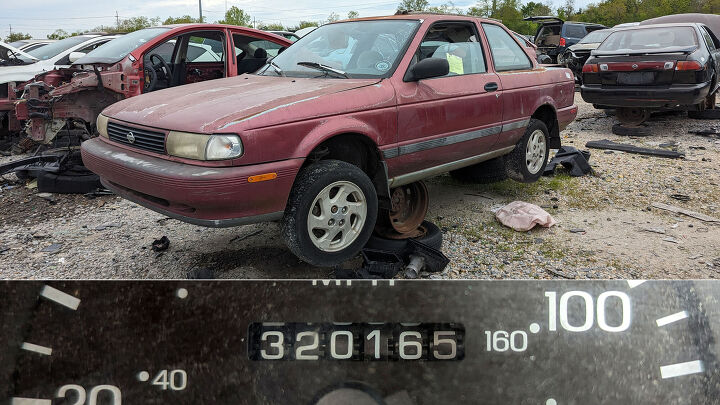

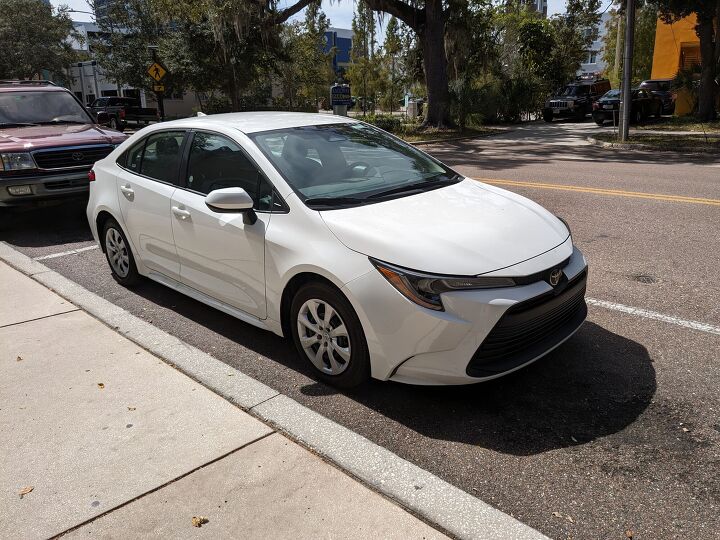

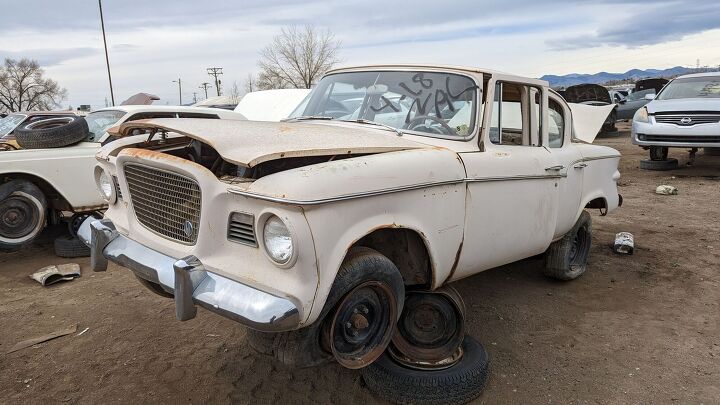
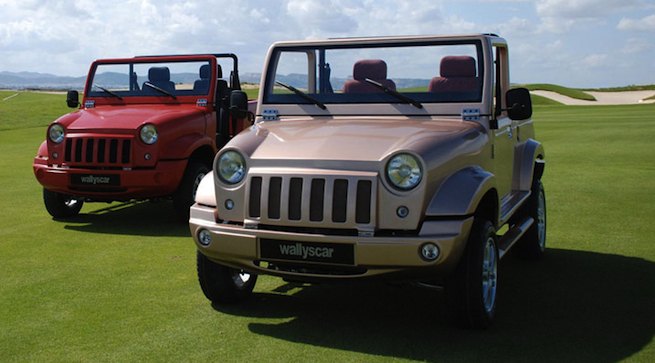
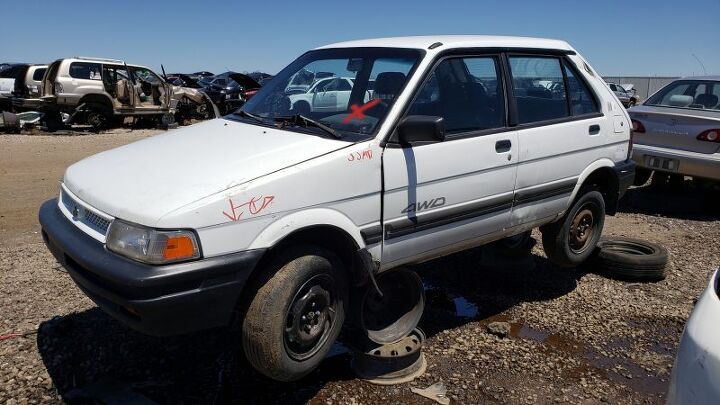

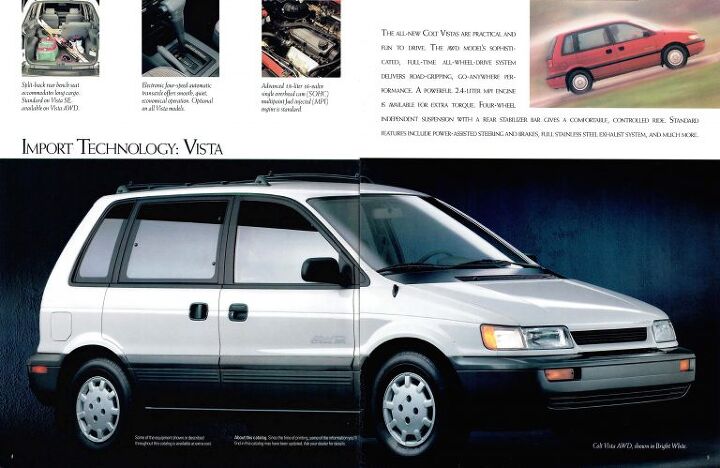
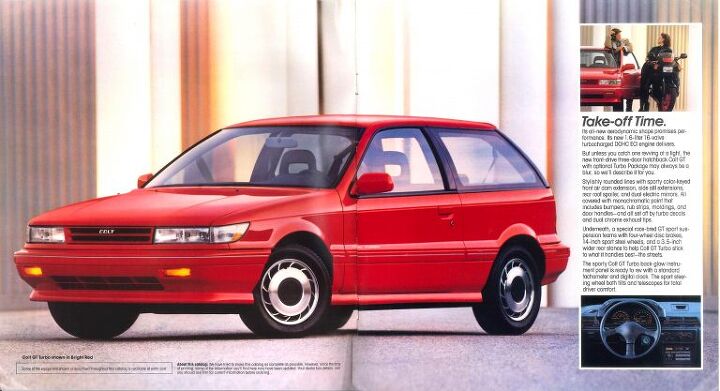
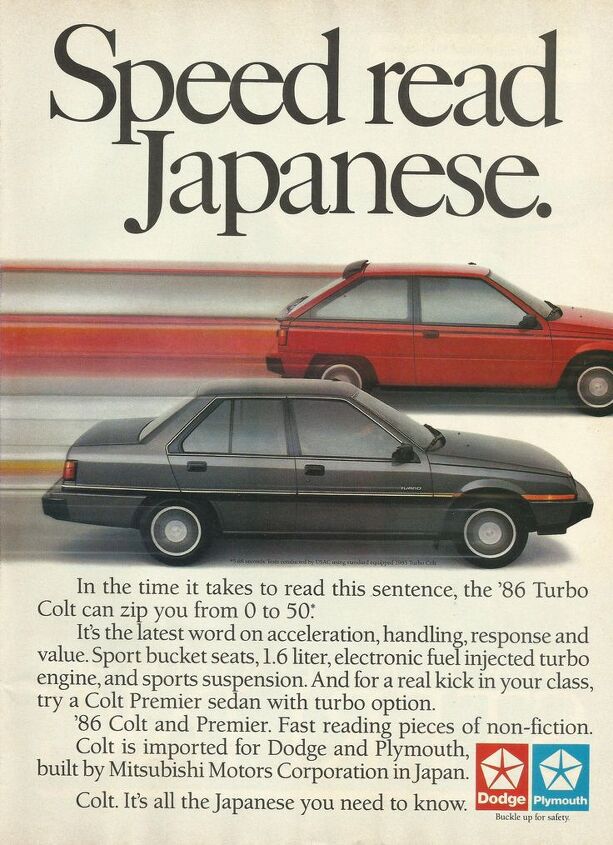
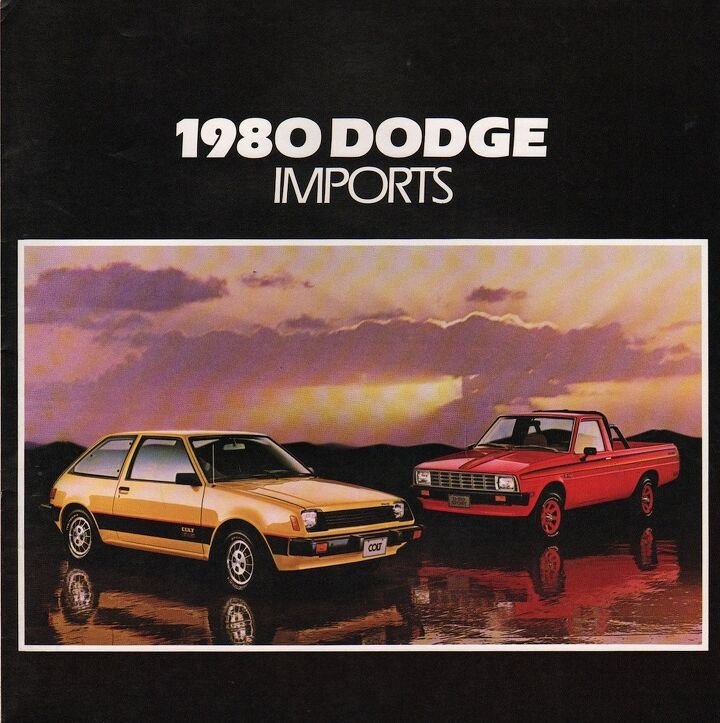
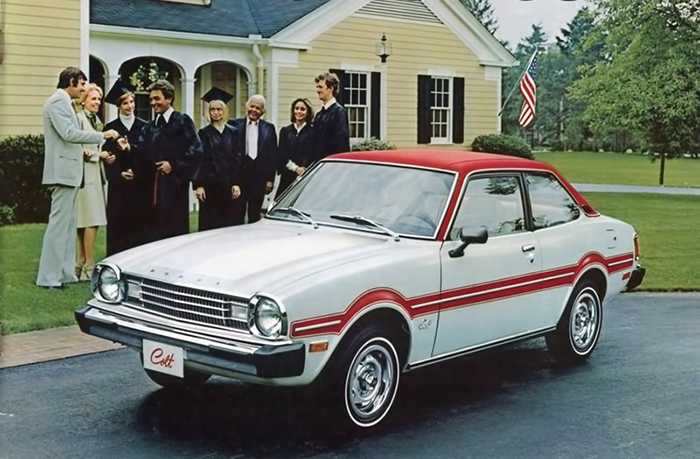
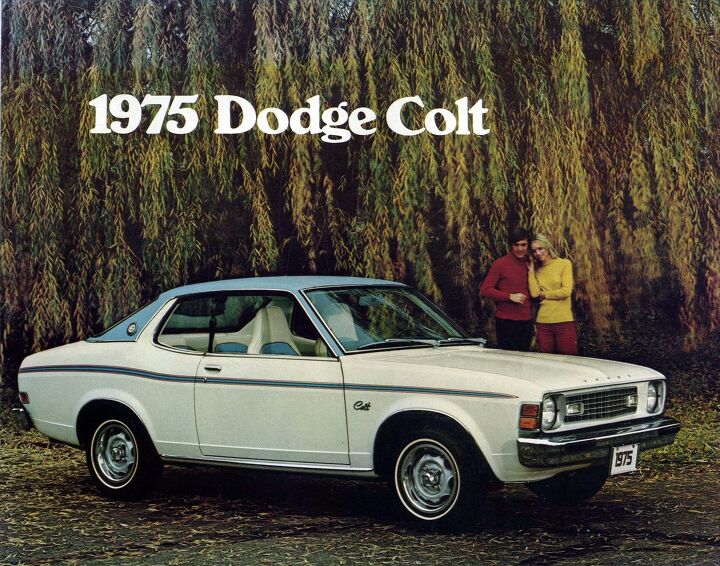
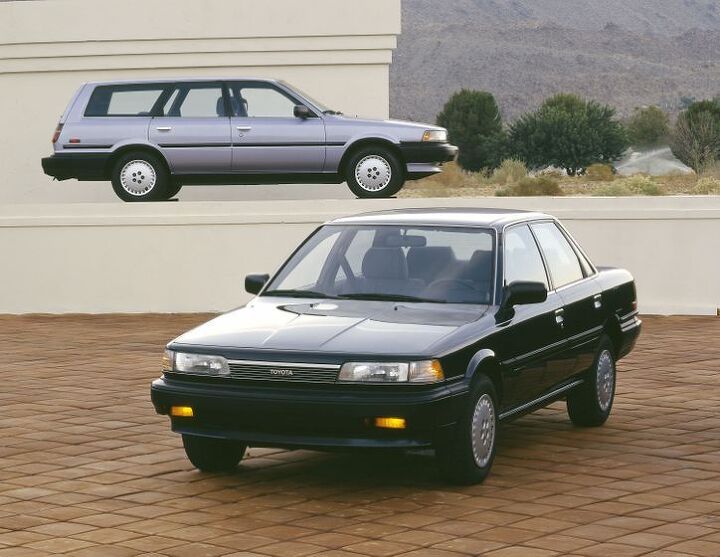












Recent Comments